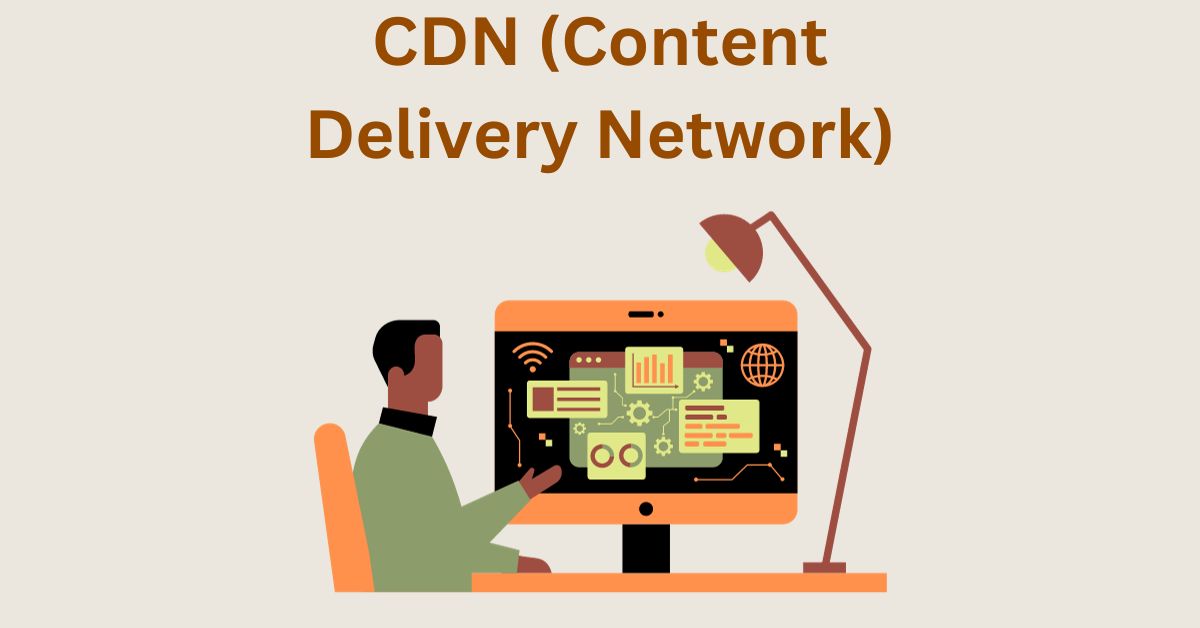Content Delivery Network (CDN): The Secret to Lightning-Fast Webpages
Estimated reading time: 4 minutes
Last updated on May 21st, 2024 at 07:41 am
Imagine you order something online, and it has to travel a long way to reach your doorstep.
Now, think of a Content Delivery Network (CDN) as a superhero that makes this delivery lightning-fast.
Here’s the cool part – websites with a CDN load 50% faster than those without.
Remember how important website speed is?
Well, CDNs contribute to that by reducing the time it takes for your site’s content to reach visitors.
What exactly is CDN – Content Delivery Network?
Imagine you’re ordering a pizza, and instead of it being made in a kitchen far away, there’s a local pizza place right next door that bakes it for you.
That’s kind of how a Content Delivery Network (CDN) works for websites.
A CDN is like having multiple local pizza places for your website content.
Instead of storing all your pictures, videos, and other stuff in one faraway place, a CDN spreads them out to various locations closer to your website visitors.
This makes your website load faster because people can get the information from a nearby location, like getting a pizza from the local spot instead of waiting for it to travel across the city.
In fact, Websites using CDNs experience a loading time reduction of up to 50%
How CDNs Work?
Let’s say your website is like a famous book, and people from different cities want to read it.
Instead of sending a copy of the book to each person individually, you make copies and place them in libraries across different cities.
When someone wants to read it, they can grab it from the nearest library.
Similarly, a CDN creates copies of your website’s content and stores them in multiple servers worldwide.
When someone tries to access your site, the CDN directs them to the closest server, so they get the information faster.
This process reduces the time it takes for your website to load, creating a better experience for your visitors.
Interestingly CDNs can cut a website’s load time by 73%, ensuring your visitors don’t get bored waiting.
Key Components of a CDN
Think of a CDN like a well-oiled machine with three main parts: the network of servers, the caching system, and the delivery optimization.
The network spreads across different locations, the caching stores copies of website content to speed things up, and the optimization makes sure the content gets to you efficiently.
CDNs can make websites load up to 2 times faster, and they handle around 72% of internet traffic daily.
They’re like the secret superheroes behind the scenes, making the web work better for everyone.
Benefits of Using a CDN
Picture this: you’re watching your favourite show online, and it keeps buffering.
Frustrating, right? Well, CDNs help prevent that.
They make websites load faster, which means no more waiting for pages to appear.
Not only that, but CDNs also make websites more reliable and secure.
In fact, they can reduce website downtime by up to 40%.
Plus, they handle tons of data every day, making the internet smoother for billions of people worldwide.
Common Use Cases for CDNs
Think of CDNs like a superhero for websites. They come to the rescue in various situations:
Speedy Delivery: CDNs help deliver content faster to users, reducing load times.
This is crucial because 47% of people expect a webpage to load in two seconds or less.
Handling Traffic Spikes: Imagine a big sale on your website – lots of people rushing in at once.
CDNs can handle sudden traffic increases, ensuring your website doesn’t crash.
In fact, CDNs have prevented up to 75% of website downtime.
Global Reach: If your website has visitors from around the world, a CDN ensures everyone gets a fast and consistent experience.
This is especially important as 51% of online shoppers in the U.S. won’t wait more than 10 seconds for a page to load.
I recommend this combination = Cloudflare CDN + Cloudflare Super Page Cache Plugin.
Both are free to use.
Wrapping Up
A Content Delivery Network (CDN) is like a super-fast delivery system for internet content.
It spreads things like videos, images, and web pages across different locations worldwide.
This helps stuff load quicker and smoother for you, no matter where you are.
CDNs make sure you can access websites and watch videos without long waits or glitches.
They’re kind of like internet traffic managers that make everything run faster and better for users everywhere.
As the internet keeps growing, CDNs will keep playing a big role in making our online experience speedy and reliable.
